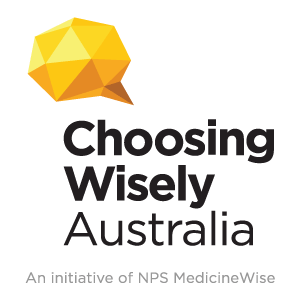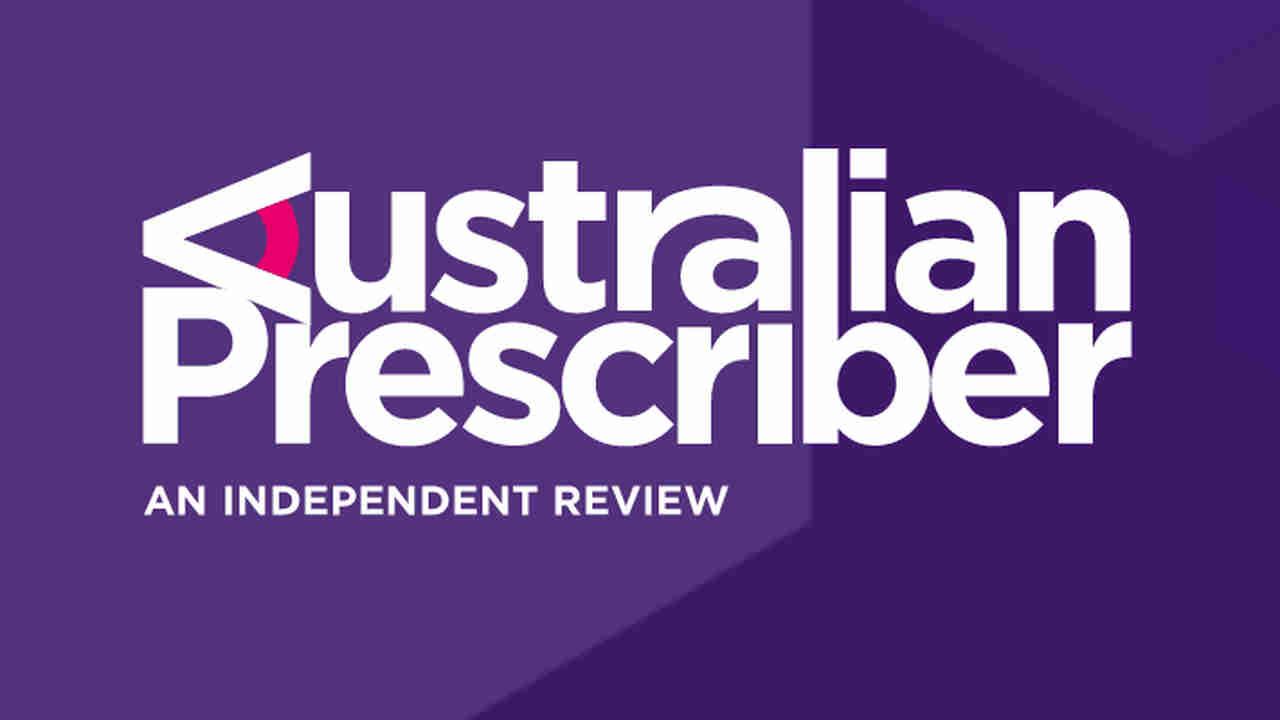Asthma and children: diagnosis and treatment
Asthma is a chronic disease that requires accurate diagnosis, regular treatment and review.
For consumers, check out Medicines for treating asthma
Asthma diagnosis and treatment during the COVID-19 pandemic
Because of the COVID-19 pandemic, some aspects of asthma management, particularly around use of spirometry and nebulisers, may be more restricted at this time.
NPS MedicineWise currently recommends that patients:
- keep taking their regular medicines
- practice good hygiene and distancing to avoid infection
- contact health professionals if they become ill.
NPS MedicineWise currently recommends that health professionals:
avoid spirometry or peak expiratory flow in patients with a fever or a worsening acute respiratory condition
only use spirometers with inline filters
avoid using nebulisers
- note that salbutamol can only be bought in small quantities in pharmacies
- keep themselves informed as the situation changes.
Key points
- The Australian Asthma Handbook was updated in 2019 with specific guidelines for children aged 1–5 years and 6–11 years old.
- An asthma diagnosis should always be supported with spirometry, or a treatment trial for children unable to undergo spirometry. Asthma should not be diagnosed in infants aged less than 12 months old.
- Review short-acting beta2 agonist (SABA) use regularly to avoid overreliance on SABAs.
- Low-dose inhaled corticosteroid (ICS) is the first-line preventer for most children with asthma who need preventer treatment.
- ICS + long-acting beta2 agonist (LABA) combinations should not be used for children younger than 6 years, due to lack of safety evidence.
- At each asthma visit, assess inhaler technique and adherence to medicines before stepping up or stepping down asthma medicines.
- All children with asthma should have an individualised asthma action plan that is understood and followed by parents and carers.
Find out about the changes to guidelines for managing asthma in adults and adolescents
Practice Review – Paediatric asthma: diagnosis and treatment

Australian GPs recently received a Practice Review designed to help them reflect on reflect on spirometry referrals and their prescribing of asthma medicines for children with asthma. It was developed in collaboration with GPs and has been sent to approximately 30,000 prescribers nationally, including all GPs.
- Find COVID-19 updates for asthma
- Access a sample report
- Read FAQs about the PBS and MBS Practice Review and how to interpret and understand your data
- Find aggregate data of first preventer prescribed by Australian GPs.
- Find COVID-19 updates for asthma
- Access a sample report
- Read FAQs about the PBS and MBS Practice Review and how to interpret and understand your data
- Find aggregate data of first preventer prescribed by Australian GPs.
Medicinewise News: Spirometry and its role in diagnosing children’s asthma

Guidelines recommend that most children aged 6 years and over can perform spirometry reliably, to support an asthma diagnosis. However in clinical practice we see a different story, and spirometry is underused in primary care.
For asthma – children are not small adults

With guidelines changing for the treatment of asthma in adults, it is important to remember that, as far as asthma goes, children are not small adults. The adult asthma treatment paradigm does not apply to children.
Choosing Wisely Australia

Choosing Wisely Australia is an initiative that brings the community together to improve the quality of healthcare through considering tests, treatments and procedures where evidence shows they provide no benefit or, in some cases, lead to harm.
Led by Australia’s colleges, societies and associations and facilitated by NPS MedicineWise, Choosing Wisely Australia challenges the way we think about healthcare, questioning the notion ‘more is always better’.
Recommendations from the Thoracic Society of Australia and New Zealand
- Do not prescribe combination therapy (inhaled corticosteroids with long-acting beta2 agonist) as initial therapy in mild to moderate asthma before a trial of inhaled corticosteroids alone.
- Do not use oral beta2 agonists as bronchodilators in asthma, wheeze or bronchiolitis.
Recommendation from the RACP Paediatrics and child health division
- Do not routinely order chest X-rays for the diagnosis of asthma in children.
Australian Prescriber: The cost of asthma medicines

Helen K Reddell, Kirsty Lembke, Nicholas J Zwar
Aust Prescr 2018;41:34-6
Most adults and adolescents with asthma require a preventer inhaler. In Australia these patients are often prescribed a combination inhaler containing a corticosteroid and a long-acting beta2 agonist.
These combination inhalers increase the cost of treatment for patients and for government and may not provide extra benefit.
For your patients
This fact sheet helps parents manage their children's asthma and wheeze effectively.
This factsheet provides carers with practical steps and information to help them prepare a child for spirometry.
Getting children ready for spirometry – a guide for parents and carers
Date published : 27 April 2020
This checklist covers most of the commonly used inhalers available for the treatment of asthma. Use this resource to teach, check and/or confirm the way your patients use their inhalers.
Clinical resources and tools
Severe asthma and COVID-19 resources
- Best-practice evidence based guidance for the management of asthma in primary care is outlined in the Australian Asthma Handbook.
- Written action plans are an integral part of asthma management. The National Asthma Council (NAC) asthma action plan library contains a selection of templates to download.
- Charts, information papers and infographics are also available for viewing online and to download through the health professional resources page of the NAC website.
- Videos showing the correct use of inhalers (in English and some other languages) are available to demonstrate the instructions for different inhalers.
Diagnosis
|
The prevalence of asthma in children in Australia is among the highest in the world. This study followed approximately 10,000 children over 2 years to investigate the incidence, prevalence, risk factors, management and consequences of wheeze or asthma among infants and kindergarten-aged children in Australia. Results demonstrated poorer health outcomes in children at age 6–7 years, if they experienced wheeze or asthma at age 4–5 years. |
|
|
Kavanagh J, Jackson DJ, Kent BD. Over- and under-diagnosis in asthma. Breathe (Sheff) 2019;15:e20-e7. |
This review highlights that asthma is often not correctly or adequately diagnosed. Overdiagnosis of asthma leads to unnecessary treatment and delays in making an alternative diagnosis. An asthma underdiagnosis on the other hand, results in patients missing out on necessary treatment. |
Medicines
|
This randomised controlled and triple-period crossover trial assessed the effectiveness of different step-up therapies for children (n=182) with uncontrolled asthma receiving low-dose inhaled corticosteroids. Overall, response to step-up therapy with long-acting beta2 agonists was likely to be better than response to montelukast or high-dose inhaled corticosteroids step-up therapy. However variability existed between children, highlighting the importance to regularly monitor and appropriately adjust each child’s asthma medicine. |
|
|
This randomised double-blind placebo-controlled trial followed 288 children and adolescents over 44 weeks to assess the effectiveness of four different rescue treatments involving albuterol with or without the inhaled corticosteroid beclometasone (spelled ‘beclomethasone’ in the US). The study results suggested children with mild persistent asthma should not be treated with rescue albuterol alone. |
Asthma action plans
|
Written action plans give authority to the child or parent/carer to take appropriate action when managing an acute asthma condition. The findings of this review reported that the main reason for not following written action plans was the parent/carer’s confidence in their child’s illness and its treatment. Language barriers, ambiguity in the instructions or limited understanding of the condition all can lead to additional problems when using written action plans. |
|
|
An evidence-based review of 26 randomised controlled trials found that individualised and complete written asthma action plans, including 2–4 action points and the use of both inhaled and oral corticosteroid, consistently improved outcomes. |
